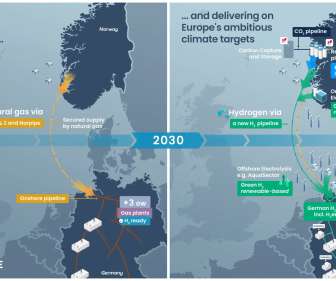Equinor and RWE to develop hydrogen-fired power plants in Germany, Norway-to-Germany hydrogen pipeline
Green Car Congress
JANUARY 6, 2023
The partners aim to replace coal-fired power plants with hydrogen-ready gas-fired power plants in Germany, and to build production of low carbon and renewable hydrogen in Norway that will be exported through pipeline to Germany. More than 95% of the CO 2 will be captured and stored safely and permanently under the seabed offshore Norway.























Let's personalize your content